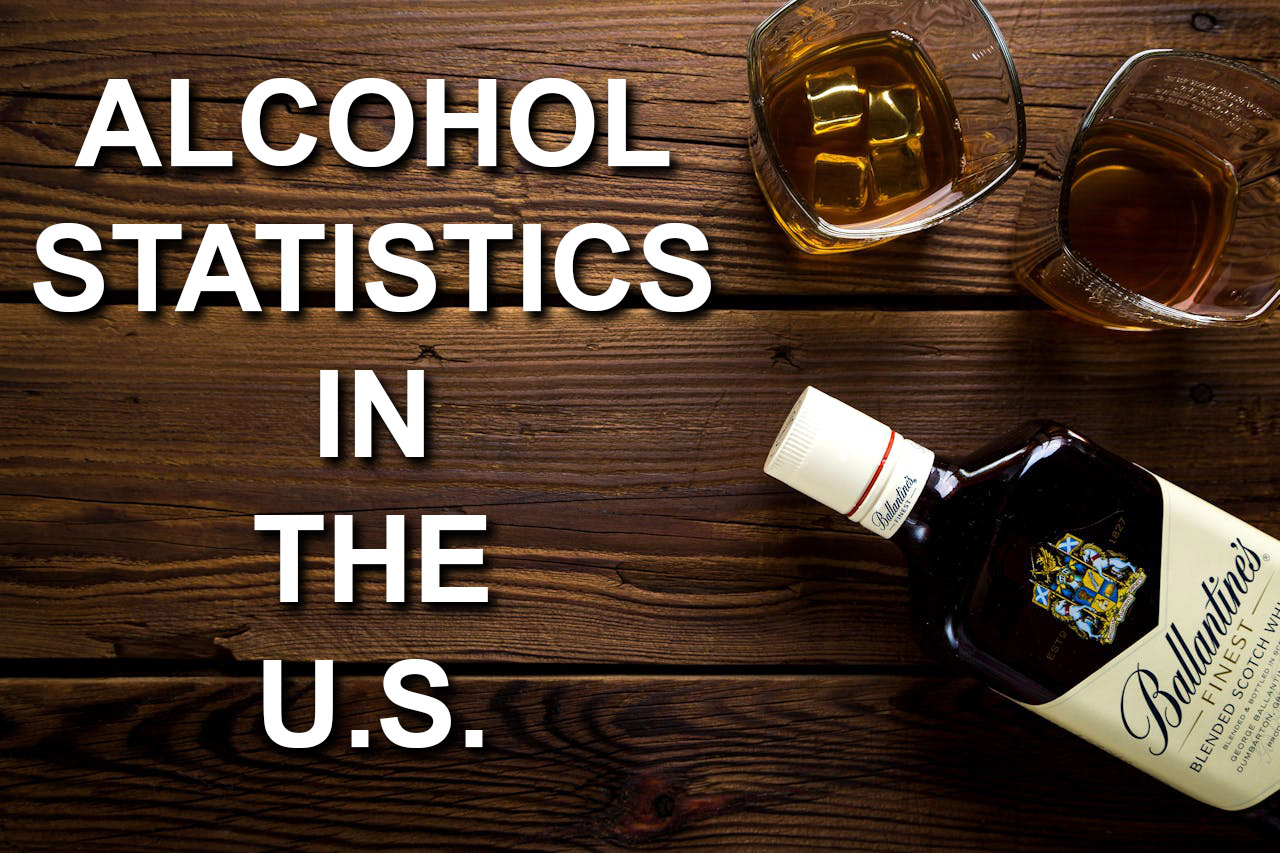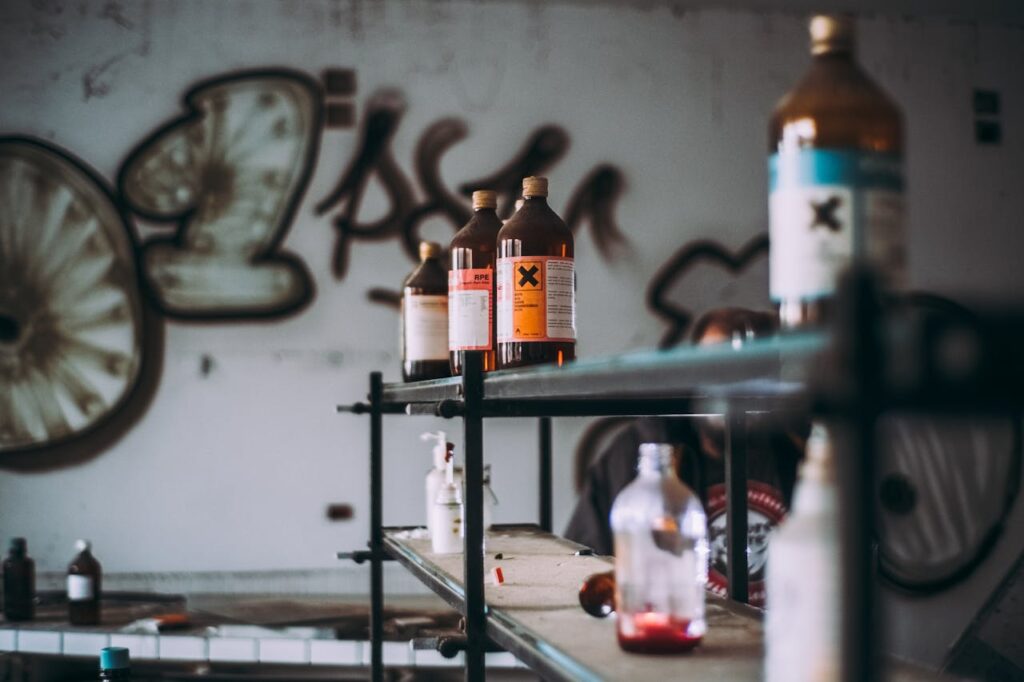Breaking Down Alcohol Statistics in the U.S.

Alcohol use remains one of the most discussed public health topics in America. Despite growing awareness, new data reveal that the problem is far from contained. Accurate alcohol statistics shed light on who’s drinking, how much, and at what cost. This kind of clarity helps individuals and families recognize the real dangers behind normalized habits. At Sun Valley Rehab, we believe that knowledge is the first step toward prevention and recovery. When people see what the numbers truly show, they’re better equipped to make choices that support healing and accountability. These figures tell a deeper story—one about resilience, awareness, and the urgent need to treat alcohol use as both a medical and social concern.
How Common Is Drinking and Binge Drinking in the U.S.?
Nearly half of Americans aged 12 or older report drinking alcohol monthly, and about one in five engage in binge drinking during that same period. Experts working in alcohol rehab in San Fernando Valley highlight how these behaviors affect not only individuals but their households. Among adults over 18, roughly 21.7 percent binge drink—almost 25 percent of men and 18.7 percent of women. These numbers reveal that risky consumption isn’t limited to heavy drinkers or those in crisis; it’s woven into social habits nationwide.

The concern deepens when considering that binge drinking often progresses into dependence, leading to long-term consequences like liver disease and cognitive decline. In addiction treatment, these patterns help professionals design prevention models that emphasize moderation, education, and early detection. The broader alcoholism statistics show that early intervention can dramatically reduce future hospitalizations and relapse rates.
Numbers Behind Drinking and Binge Drinking in the U.S.
Even short-term binge drinking patterns lead to long-term problems. These figures show just how common risky alcohol use really is.
- 46.6% of Americans aged 12+ drink monthly
- 20.1% binge drink monthly
- 21.7% of adults binge drink each month
- 24.9% of men vs. 18.7% of women binge drink
- One in five drinkers admits to regular excessive use
What Does “Excessive Alcohol Use” Really Mean?
The phrase “excessive alcohol use” often appears in reports, but what does it truly represent? In inpatient detox San Fernando Valley, clinicians stress that understanding definitions prevents misinformation. Excessive use includes binge drinking, heavy drinking, underage drinking, and alcohol use during pregnancy. For women, that means four or more drinks per occasion; for men, five or more. Heavy drinking refers to eight or more drinks per week for women and fifteen for men. These clear thresholds help professionals measure risk and track national trends.
The statistics about alcohol reveal that many people underreport their consumption, making the true numbers likely higher than reported surveys suggest. This matters for prevention because individuals who minimize their intake may delay seeking help until their condition worsens. Recognizing where casual use becomes excessive allows families and clinicians to step in earlier. These statistics on alcohol abuse provide structure for evidence-based interventions that address not only consumption but also co-occurring issues like depression or trauma.
Facts That Define Excessive Alcohol Use
Definitions matter because they determine how statistics are interpreted and who qualifies as “at risk.”
- Binge drinking: 4+ drinks (women), 5+ (men) per occasion
- Heavy drinking: 8+ drinks/week (women), 15+ (men)
- Includes underage drinking and alcohol use during pregnancy
- One in six U.S. adults binge drinks at least four times per month
- 25% of binge drinkers consume eight or more drinks at once
How Serious Are Mortality and Liver Disease Trends?
When it comes to health, alcohol death statistics reveal a sharp and deeply concerning rise. Of nearly 97,000 liver-related deaths recorded in 2023, nearly half were alcohol-related—about 43,000 lives lost. In the past decade, alcohol-attributable deaths jumped by about 70 percent, rising from 27,762 in 2012 to over 51,000 in 2022. Programs such as residential treatment Los Angeles often see firsthand the toll these numbers represent—patients struggling with advanced liver disease, pancreatitis, and cardiovascular damage linked directly to prolonged drinking.

Alcohol’s damage extends beyond the liver; it weakens the immune system, worsens diabetes, and increases cancer risk. For addicts and their families, these statistics of alcohol make clear that the consequences are not distant possibilities—they are immediate realities. Every percentage increase represents thousands of lives cut short, families fractured, and communities burdened. The data underscores why medical detox, therapy, and aftercare are not luxuries but vital interventions to prevent irreversible harm.
Mortality and Liver Disease Figures in the U.S.
The human toll of alcohol-related illness is clear in recent national death data.
- 96,610 liver disease deaths recorded in 2023
- 44.5% of those deaths—about 43,000—linked to alcohol
- Alcohol-related deaths rose 70% from 2012 to 2022
- Alcohol causes one in ten deaths among working-age adults
- Liver disease remains the third leading cause of alcohol-related deaths
How Much Does Alcohol Cost Americans in Health and Life?
The financial and human toll of alcohol is staggering. Excessive alcohol use leads to roughly 178,000 deaths each year in the U.S., shortening victims’ lives by an average of 24 years. Experts leading a relapse prevention program California emphasize that these losses ripple through generations—impacting children, workplaces, and healthcare systems. In 2010 alone, the economic cost of excessive drinking reached $249 billion, with almost half stemming from lost productivity. Medical expenses, law enforcement costs, and property damage from alcohol-related incidents make up much of the rest.
When examining statistics on alcoholism, it becomes clear that addiction affects every part of society. Each relapse, hospitalization, or DUI adds to a collective cost that affects everyone, not just drinkers. The most sobering fact is that these expenses could be dramatically reduced through prevention, early detox, and continuous aftercare. Awareness campaigns and treatment funding often save far more than they cost, both financially and in lives preserved. The alcohol addiction statistics make an irrefutable case for prioritizing recovery services over punishment or neglect.
Financial and Life-Year Costs of Alcohol Use
Alcohol’s economic and health burdens reach across every layer of society.
- 178,000 annual U.S. deaths linked to excessive drinking
- Average of 24 years of life lost per alcohol-related death
- $249 billion total cost in 2010 due to alcohol use
- Nearly 50% of costs come from lost workplace productivity
- Healthcare costs alone exceed $28 billion annually
Why Do Demographics Matter in Alcohol Use?
Alcohol use patterns vary widely across age, gender, and community lines. In adults, about 25 percent of men and 19 percent of women report binge drinking within a month. Among youth aged 12 to 17, about 3.5 percent engage in binge drinking, a figure that should never be ignored. Therapists guiding alcohol detox in Los Angeles often note that social context determines how early and how often people drink. Cultural norms, accessibility, and peer pressure all shape risk. Gender differences also play a significant role—women metabolize alcohol differently, leading to faster onset of damage even at lower consumption levels.

Meanwhile, adolescent brains are far more susceptible to long-term cognitive impairment from repeated exposure. These alcohol abuse statistics highlight that prevention must adapt to the population it serves. In schools, that means education and early screening; for adults, it means honest assessment and accountability. Recognizing demographic factors helps design personalized recovery plans that address each client’s unique vulnerabilities and strengths.
Demographic Differences in Alcohol Use
Who drinks and how much often depends on age, gender, and environment.
- 24.9% of men and 18.7% of women binge drink monthly
- 3.5% of adolescents (12–17) binge drink monthly
- Adults 25–44 show the highest binge-drinking rates
- White adults report the highest overall drinking prevalence
- Rural counties show higher alcohol-related death rates than cities
Are Drinking Habits Really Changing in the U.S.?
Recent surveys suggest that total adult alcohol consumption may have dropped to its lowest point in nearly 90 years, with about 54 percent of adults identifying as drinkers in 2025. However, addiction specialists leading a dual diagnosis treatment center in Los Angeles remind us that this doesn’t necessarily mean progress. While fewer people may drink overall, those who do often drink more heavily or dangerously. The rise in alcohol-related hospitalizations and deaths supports this pattern. The alcohol facts and statistics show that even as casual drinking declines, high-risk consumption is intensifying.
This “polarization effect” means the average drinker might be cutting back, but chronic drinkers are consuming at rates far beyond safe limits. As a result, healthcare systems face greater strain and families face greater emotional and financial stress. Effective treatment must reflect this shift, focusing not only on access to care but also on education, screening, and early behavioral intervention. Real progress depends on identifying these new risk patterns before they escalate into chronic dependence.
U.S. Alcohol Consumption Trends in Perspective
Even as fewer people drink, the intensity of drinking among heavy users keeps rising.
- Only 54% of U.S. adults report drinking in 2025 (lowest in 90 years)
- Heavy drinkers now consume over 60% of all alcohol sold
- Alcohol-related hospitalizations increased by 30% in a decade
- Alcohol deaths climbed from 27,762 in 2012 to 51,191 in 2022
- Over 40% of drinkers say they drink more since the pandemic
Do People Understand the Real Health Risks?
Many underestimate the physical and psychological risks of alcohol use. Despite awareness campaigns, most still view alcohol as a “social” drug rather than a carcinogenic substance. Clinical teams leading outpatient alcohol rehab Los Angeles often see patients who began drinking as a coping mechanism, unaware of its link to cancer, depression, and irreversible organ damage. The alcoholic statistics reveal that 44.5 percent of all liver disease deaths involve alcohol. Beyond that, alcohol contributes to several cancers, including those of the mouth, breast, and colon.

This disconnect between perception and reality delays recovery. People tend to seek help only after facing major health crises or family breakdowns. When they finally enter detox or rehab, education becomes just as vital as treatment. Learning the real statistics on alcohol abuse empowers patients to make lasting changes. For families, this information helps replace stigma with understanding, turning judgment into compassion—a critical step toward sustained sobriety and prevention.
Health Risks That Many Americans Underestimate
Alcohol’s reputation as “social” masks its serious medical consequences.
- 44.5% of liver disease deaths involve alcohol
- Linked to breast, mouth, colon, and throat cancers
- Contributes to 1 in 20 global deaths annually
- Alcohol-related mental health disorders up 40% since 2019
- Alcohol weakens immune response and impairs healing
Final Thoughts on Breaking Down Alcohol Statistics in the U.S.
The story behind alcohol statistics in America is both sobering and hopeful. The data confirms the scale of harm, but it also points to effective solutions through awareness, therapy, and medical care. Understanding statistics about alcohol isn’t only for researchers—it’s for anyone who wants to protect their health or support someone they love. Alcohol use disorder can be treated, and every case of recovery adds strength to these numbers. The alcohol abuse statistics and mortality data highlight why early detection, compassionate care, and education matter so much. Addiction may begin quietly, but it can end with purpose, support, and evidence-based treatment. If you or someone close to you needs help, reach out today. Contact us to learn about detox options, therapy programs, and ongoing recovery support that truly make a difference. The numbers may show the problem, but your next call could be part of the solution.
You Have Questions
We Have Answers
At Tranquility Recovery Center, we offer treatment for a wide range of addictions, including alcohol, opioids, prescription drugs, and illicit substances. Our team tailors each program to meet individual needs, focusing on both the physical and emotional aspects of recovery.
At Tranquility Recovery Center, we offer treatment for a wide range of addictions, including alcohol, opioids, prescription drugs, and illicit substances. Our team tailors each program to meet individual needs, focusing on both the physical and emotional aspects of recovery.
At Tranquility Recovery Center, we offer treatment for a wide range of addictions, including alcohol, opioids, prescription drugs, and illicit substances. Our team tailors each program to meet individual needs, focusing on both the physical and emotional aspects of recovery.